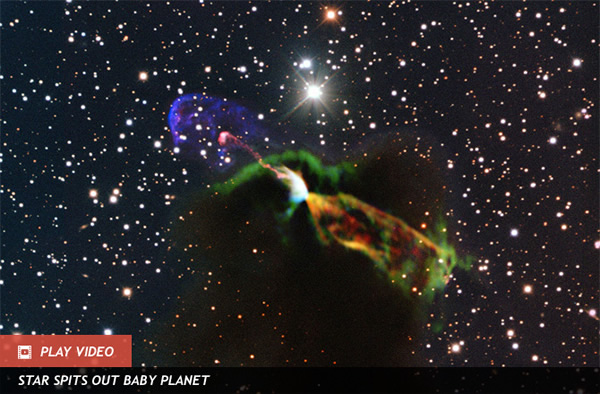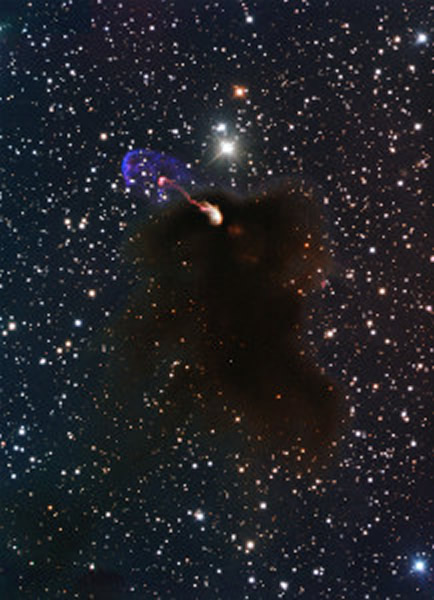Baby Star Blasts Powerful Jets into Deep Space
Combined ALMA and NTT observations of Herbig-Haro object HH 46/47 show jets moving toward and away from us (ESO/ALMA). View full-resolution version.
As anyone with kids knows, baby humans have a tendency to throw stuff around — and baby stars are no different. Except in their case, the “stuff” is high-energy stellar material traveling a million kilometers an hour, and “around” is an area of interstellar space several light-years across.
But other than that, very similar.
The image above — a combination of observations made with the recently-constructed Atacama Large Millimeter/submillimeter Array (ALMA) and ESO’s New Technology Telescope (NTT) — shows a fledgling star blasting glowing star-stuff out into space from within the cloud of cold, dark dust in which it formed.
Herbig-Haro 46/47′s receding jet is invisible in optical light, hidden by a cloud of dark dust. (ESO/Bo Reipurth)
Imaged in just a fraction of the time that would have been needed with other telescopes — a mere five hours — ALMA’s next-generation capabilities allow the star’s more distant jet to be seen even though it would otherwise be nearly invisible behind the dust cloud. The observations have also shown the material in the jets to be traveling even faster than previously thought.
In addition, ALMA was able to resolve another jet aimed in another direction — a previously unknown feature that may be coming from a lower-mass companion star.
And to think all this was done before the telescope’s construction was even fully complete!
“ALMA’s exquisite sensitivity allows the detection of previously unseen features in this source, like this very fast outflow,” said Héctor Arce of Yale University, team leader and first author of the new study. “This shows that there will certainly be many surprises and fascinating discoveries to be made with the full array. ALMA will certainly revolutionize the field of star formation!”
The glowing jet structure, called Herbig-Haro 46/47, is located 1400 light-years away in the southern constellation Vela.
Image credit: ESO/ALMA (ESO/NAOJ/NRAO)/H. Arce. Acknowledgements: Bo Reipurth(Aug 21, 2013 11:39 AM ET // by Jason Major)













